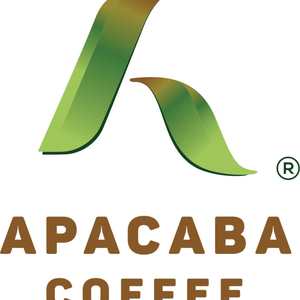Search
1/5
RM25.00
RM28.00-11%
APACABA COFFEE Indonesia Atu Lintang Full Washed 100Gram [ Medium Roast Coffee Bean ]
Sold by Apacaba Coffee
1 sold
Select options
Select
Shipping
From RM4.90
Est. delivery by May 2 - May 5
Specifications

Apacaba Coffee
14 items
About this product
Berat bersih100g
Ciri BahanHalal
Jenis KopiKacang Kopi
Kopi PanggangSederhana
Jangka Hayat3 Bulan
Rantau AsalIndonesia
Jenis PembungkusanBeg
Amaran umurTidak
Brandapacaba coffee
Product description
Specialty Grade Single Origin
Roasting Method: Rubasse Roasting
Roasted in: Apacaba Coffee Roastery Titi Jelebu
Cup Profile : Creamy, chocolate, nutty, berry,spicy, herbal
Countries : Indonesia North Sumatra
Region : Gayo Highlands (Central Aceh)
Altitude : 1500 - 1800 MASL
Variety: Ateng (P88)
Process: Wet Hulled
Harvest: 2022
SCAA Score 81.25
Farm Information:
IMany of the islands of Indonesia were formed by volcanoes and still benefit from soil that's rich in volcanic ash and ideal for growing coffee. It's no wonder that some of the world’s most famous coffees are grown on the islands of the Malay Archipelago of Indonesia: Sumatra, Sulawesi and Java.
Approximately 15 percent of all the coffee grown in Indonesia is Arabica. Sumatra is the second-largest island in the Republic of Indonesia. Sumatra Mandheling coffee is grown on the lofty volcanic slopes of Mount Leuser near the port of Padang, in the Batak region of west-central Sumatra. “Mandailing,” spelled here correctly, is technically an ethnic group in Indonesia, not a region, as is Batak.
Coffee trees were originally brought to Indonesia in the early 19th century by the Dutch, who sought to break the world-wide Arabic monopoly on the cultivation of coffee. Within a few years, Indonesian coffee dominated the world’s coffee market. Yet by the end of the century disease had completely destroyed the crop. Coffee trees were successfully replanted and quickly gained a large share of the world market until the plantations were ravaged again during World WarII.
Giling Basah, the unique method used in the production of Sumatran coffees, results in a very full body with a concentrated flavor, garnished with herbal nuances and a spicy finish. It involves hulling the parchment off the bean at roughly 50 percent moisture content (compared to 10 to 12 percent moisture, in most other regions). This unique process results in Sumatra's trademark flavor profile (low acidity, richness that lingers on the back of the palate, and a chocolate finish) and gives the green beans their signature color. The parchment is removed while the moisture is high through the wet-hulling process (giling basah) and then the exposed bean is dried to a moisture percentage acceptable for export. This Indonesian processing method gives the bean its unique colour and the hallmark Indonesian profile.
Sumatra Gayo Triple Pick G1 is sourced from family-owned farms organized around the northern tip of the island of Sumatra, in the central district of Aceh province. This region of Indonesia is also referred to as the Gayo land because the coffee farmers are from the Gayonese ethnic group. The formation of Ratawali village dated back to 1950's pioneered by Tengku Ibrahim and his family. They developed a new farmland in Ratawali valley literally by hand and painstakingly converted the rainforest into a sustainable and organic cultivation area for coffee.
Explore more from Apacaba Coffee






4.9
23194sold
RM39.50
RM55.00






![[Variety Box] Aik Cheong Cafe Art Series (Chocolate + Cappuccino + Matcha + Latte) 12 Sachets](https://p16-oec-sg.ibyteimg.com/tos-alisg-i-aphluv4xwc-sg/26ad21c49f684dfab7d380c37ab3fc5b~tplv-aphluv4xwc-crop-webp:2251:2251.webp?dr=15592&from=2378011839&idc=my2&ps=933b5bde&shcp=e1be8f53&shp=8dbd94bf&t=555f072d)
4.8
28626sold
RM14.90
RM17.80




No more products
Open TikTok
![APACABA COFFEE Indonesia Atu Lintang Full Washed 100Gram [ Medium Roast Coffee Bean ] 0](https://p16-oec-sg.ibyteimg.com/tos-alisg-i-aphluv4xwc-sg/5cccedf631ab47efb37dcc704a29c7b0~tplv-aphluv4xwc-resize-jpeg:800:800.jpeg?dr=15584&t=555f072d&ps=933b5bde&shp=6ce186a1&shcp=e1be8f53&idc=my2&from=1826719393)
![APACABA COFFEE Indonesia Atu Lintang Full Washed 100Gram [ Medium Roast Coffee Bean ] 1](https://p16-oec-sg.ibyteimg.com/tos-alisg-i-aphluv4xwc-sg/a2e66989434648ffb7dfdc84874ce578~tplv-aphluv4xwc-resize-jpeg:800:800.jpeg?dr=15584&t=555f072d&ps=933b5bde&shp=6ce186a1&shcp=e1be8f53&idc=my2&from=1826719393)
![APACABA COFFEE Indonesia Atu Lintang Full Washed 100Gram [ Medium Roast Coffee Bean ] 2](https://p16-oec-sg.ibyteimg.com/tos-alisg-i-aphluv4xwc-sg/1ecdd5e7abdd435f9f183af405b623cb~tplv-aphluv4xwc-resize-jpeg:800:800.jpeg?dr=15584&t=555f072d&ps=933b5bde&shp=6ce186a1&shcp=e1be8f53&idc=my2&from=1826719393)
![APACABA COFFEE Indonesia Atu Lintang Full Washed 100Gram [ Medium Roast Coffee Bean ] 3](https://p16-oec-sg.ibyteimg.com/tos-alisg-i-aphluv4xwc-sg/85f1e65a656d4ab9a0f5f05a7e24f87a~tplv-aphluv4xwc-resize-jpeg:800:800.jpeg?dr=15584&t=555f072d&ps=933b5bde&shp=6ce186a1&shcp=e1be8f53&idc=my2&from=1826719393)
![APACABA COFFEE Indonesia Atu Lintang Full Washed 100Gram [ Medium Roast Coffee Bean ] 4](https://p16-oec-sg.ibyteimg.com/tos-alisg-i-aphluv4xwc-sg/69aed753129844c4a87197804b75318c~tplv-aphluv4xwc-resize-jpeg:800:800.jpeg?dr=15584&t=555f072d&ps=933b5bde&shp=6ce186a1&shcp=e1be8f53&idc=my2&from=1826719393)


![APACABA COFFEE Signature Speciality 100 Gram [ Medium Roast Coffee Bean ]](https://p16-oec-sg.ibyteimg.com/tos-alisg-i-aphluv4xwc-sg/f1cd1f9ac2a24b389325e4222eb5da4b~tplv-aphluv4xwc-crop-webp:2500:2500.webp?dr=15592&from=2378011839&idc=my2&ps=933b5bde&shcp=e1be8f53&shp=8dbd94bf&t=555f072d)
![APACABA COFFEE Cababaik Specialty 100 Gram [ Medium Roast Coffee Bean ]](https://p16-oec-sg.ibyteimg.com/tos-alisg-i-aphluv4xwc-sg/56089252f8594005ac0bf1a864fd08e8~tplv-aphluv4xwc-crop-webp:2500:2500.webp?dr=15592&from=2378011839&idc=my2&ps=933b5bde&shcp=e1be8f53&shp=8dbd94bf&t=555f072d)
![APACABA COFFEE Jelebu Speciality 100 Gram [ Medium Roast ]](https://p16-oec-sg.ibyteimg.com/tos-alisg-i-aphluv4xwc-sg/1f2e288446c94293874a18d3a5863ff1~tplv-aphluv4xwc-crop-webp:2500:2500.webp?dr=15592&from=2378011839&idc=my2&ps=933b5bde&shcp=e1be8f53&shp=8dbd94bf&t=555f072d)




![[All Variant] Daifi White Coffee 3in1 (Delysh) Minuman Kopi 3 dalam 1 Murah Sedap Tanpa Tambahan Gula Putih, Rendah Kalori, Diperkaya dengan Fiber, - No Added Sugar Coffee, Low Calorie, High Fibre, Low Sugar](https://p16-oec-sg.ibyteimg.com/tos-alisg-i-aphluv4xwc-sg/c16f32f047ec4a9d9bae41101750ea0d~tplv-aphluv4xwc-crop-webp:1080:1080.webp?dr=15592&from=2378011839&idc=my2&ps=933b5bde&shcp=e1be8f53&shp=8dbd94bf&t=555f072d)
![[ALA CARTE SACHET] PELBAGAI PERISA SERBUK MINUMAN DRINK Powder Powder TANPA KAFFEIN MINUMAN SEISI KELUARGA UNTUK AIR BALANG, AIS BLENDED, DRINK MIX SENANG JE JENAME SENDIRI LULUS KKM LABTEST HALAL 100% DIRECT DARI KILANG kopi](https://p16-oec-sg.ibyteimg.com/tos-alisg-i-aphluv4xwc-sg/9595d046a90a40bba23d694b50bd7dbe~tplv-aphluv4xwc-crop-webp:1111:1111.webp?dr=15592&from=2378011839&idc=my2&ps=933b5bde&shcp=e1be8f53&shp=8dbd94bf&t=555f072d)



![[BIG PACK 100g, 300g, 1KG] Kopi Serbuk Minuman Pelbagai Perisa Viral Pack Tanpa Kafein Jenama Sendiri Lulus KKM Halal 100% | Ice Blended | Milk Shake | Air Balang Coffee](https://p16-oec-sg.ibyteimg.com/tos-alisg-i-aphluv4xwc-sg/65fae7dedfba4c5a9e8356994fded9eb~tplv-aphluv4xwc-crop-webp:800:800.webp?dr=15592&from=2378011839&idc=my2&ps=933b5bde&shcp=e1be8f53&shp=8dbd94bf&t=555f072d)

![[BUNDLE OF 4] | AIK CHEONG Cafe Art Series (Chocolate / Cappuccino / Latte / Matcha) FREE (2) IT'S CAN Hazelnut & Mint](https://p16-oec-sg.ibyteimg.com/tos-alisg-i-aphluv4xwc-sg/7df7d31edf87433f85edfb390b9fd674~tplv-aphluv4xwc-crop-webp:2084:2084.webp?dr=15592&from=2378011839&idc=my2&ps=933b5bde&shcp=e1be8f53&shp=8dbd94bf&t=555f072d)